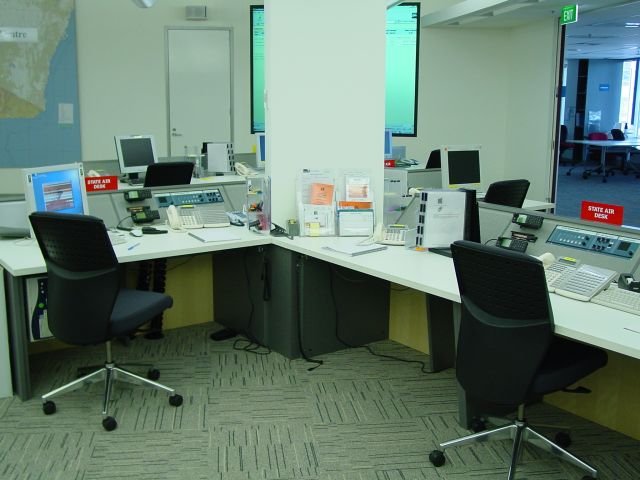| The State Airdesk is a joint initiative of the Department of Environment and Primary Industries (DEPI) and the Country Fire Authority (CFA), staffed by highly trained personnel from both organisations. The State Airdesk is managed by the SAU.
The facility is based at the State Control Centre of DEPI and is contactable 24 hours day, 365 days a year. The key responsibilities of the Airdesk are:
|
| To manage the dispatch of all State Fleet Aircraft |
| To coordinate the preparedness of state aviation resources |
| To coordinate the hire of aircraft in regional Victoria |
| To assist with the management, coordination and dispatch of aviation resources
around the state. |
|
| The State Airdesk's priority is to ensure that through a sound operating environment, procedures and protocols, all aircraft resources are utilised in a safe, efficient, and effective manner.
|
|
| State Airdesk personnel are highly trained and recognised leaders in their field. They maintain a policy of 'safety first' and pride themselves on their safety record. Debriefs are conducted at the conclusion of each fire season and major incident to refine procedures and protocols, where necessary. This ensures that aircraft operations remain as safe and efficient as possible.
|
 |
| On any given day, and in accordance with need, there will be a rostered State Aircraft Coordinator (SAC) and
Duty Aircraft Officer(s) (DAO) to perform the functions of the State Airdesk. Functions will be carried out in
accordance with directions given by the duty CFA State Coordinator and DEPI State Fire Coordinator, utilising agreed
protocols and procedures.
|
| Click here for a full list of resources coordinated by the State Aircraft Coordinator. |
| Following a request for an aircraft from an authorised officer from DEPI or CFA, the most suitable State Fleet Aircraft will be dispatched by the DAO or SAC as soon as possible. The following will be taken into consideration
prior to dispatch:
|
| The intended use of the aircraft; |
| The location of the most suitable aircraft; |
| The ability of the incident to support the aircraft, particularly fuel and management support; |
| Possible conflicting priorities. |
|
| The pre-dispatch considerations ensure that: |
| The SAU retains the ability to quickly meet any future requests; |
| All operational objectives are met as effectively & economically as possible. |

